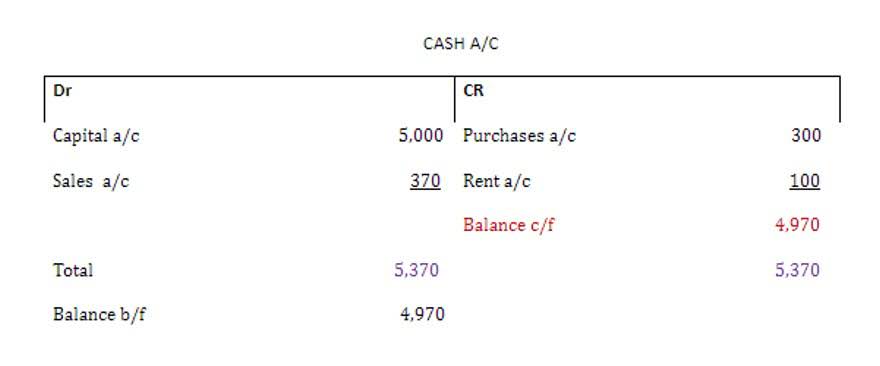Accounts Payable AP Definition, How It Works & Example

Book our Weekly Public Demo to see how we can help, and start your free trial today—no credit card required. Streamline your accounting with our cutting-edge automation solution for online transactions. Accounts Payable might sound like just another tricky part of your accounting system, but if you pay attention to it and calculate it correctly, it can tell you a lot about how well your business is doing. It shows how smartly the company is handling its money, how well it’s working with the people it buys things from, and even hints at how smooth its day-to-day operations are. If anyone ever sends you a physical invoice, scan it and make sure it’s with all of your other documents.
- He has worked as an accountant and consultant for more than 25 years and has built financial models for all types of industries.
- For example, paying an invoice within a discount period that many vendors provide.
- Therefore, an increase in accounts payable is reflected as an “inflow” of cash on the cash flow statement, while a decrease in accounts payable is shown as an “outflow” of cash.
- Since your company did not yet pay its employees, the Cash account is not credited, instead, the credit is recorded in the liability account Wages Payable.
- It functions similarly to a short-term loan from a vendor—it’s a liability on your balance sheet and requires careful management to avoid late payment penalties.
- These liabilities are typically short-term and are settled within a specified period, often referred to as the payment terms.
- These purchases are made during the period for which you need to measure the accounts payable turnover ratio.
Checking and Filling Invoice Details
- A chart of accounts is a statement or report that captures all your accounting transactions including accounts payable.
- Think equipment purchases, cleaning services, staff uniforms, software subscriptions, office supplies, and much more.
- From an accountant’s point of view, your hands are often full with the day-to-day work that keeps your practice running.
- Whether you’re looking to tighten up your budget, negotiate better terms with suppliers, or just make sure you’re on solid financial ground, mastering these formulas is a step in the right direction.
Double Entry Bookkeeping is here to provide you with free online information to help you learn and understand bookkeeping and introductory accounting. Determine the average Accounts Payable by adding the beginning and ending AP, then dividing by two. Average Accounts Payable is determined by adding the beginning and ending AP for a period and dividing by two.

Examples of accounts payable expenses
To calculate the accounts payable turnover ratio, you divide net credit purchases by average accounts payable. While accounts payable ensures your business is up to date on payments and allows you to accurately project cash flow, accounts receivable is the money owed to your business by customers or clients. Until the balance is paid, the outstanding amount is recorded under accounts receivable. If you are an accounts payable professional, your primary tasks revolve around tracking all cash flow and payments to vendors and suppliers.
- Besides this, your purchase and payment process would also get automated.
- However, if you do not see an account that you need, you can add your own accounts manually in your chart of accounts.
- The amount reported on the balance sheet is the amount that has not yet been used or expired as of the balance sheet date.
- In the following sections, we’ll introduce you to essential formulas for calculating AP, setting you up with the knowledge you need.
- The economic incentive structure for a company managing its accounts payable is distinct from the aforementioned.
- Let’s say that on the invoice they sent you, Paint World offers you a 2 percent discount for paying within 15 days.
- Purchases on credit indicate the total value of goods and services purchased on credit during the period.
How to Calculate Accounts Payable Turnover Ratio
This liability is recorded on the company’s balance sheet under current liabilities and represents a promise to pay an amount within a specified period. Software that automates the accounts payable process makes it easy for businesses to submit invoices and process payments through a single platform—all of which saves time and money. Said differently, the accounts payable of a company (or buyer) is the accounts receivable of the 3rd party supplier or vendor owed money for goods and services already delivered. If a company pays its suppliers and vendors in cash immediately upon receipt of the invoice, the accounts payable balance would be near zero. The formula to calculate accounts payable starts with the beginning accounts payable balance, adds credit purchases, and subtracts supplier payments. In effect, the accounts payable balance increases when a supplier or vendor extends credit, and vice versa when the company pays in cash (and fulfills the payment obligation to its creditors).
Is Accounts Payable a Current Liability?

Our goal is to deliver the most understandable and comprehensive explanations of financial topics using simple writing complemented by helpful graphics and animation videos. We follow strict ethical journalism practices, which includes presenting unbiased information and citing reliable, attributed resources. The articles and research support materials available on this site are educational and are not intended to be investment or tax advice. All such information is provided solely for convenience purposes only and all users thereof should be guided accordingly. Browse all our upcoming and on-demand webcasts and virtual events hosted by leading tax, audit, and accounting experts.

Owner’s Equity: What It Is and How to Calculate It
This is in line with accrual accounting, where expenses are recognized when incurred rather than when cash changes hands. The credit is the usual version of the normal balance for the accounts payable. Every company has a usual paying period for the accounts payable natural balance accounts receivables of about one to three months. During this period, the normal balance of the company for the account payable stays on the credit side. For accounts receivables that are on the assets side, the normal balance is usually debit.
The accounts payable metric, by itself, offers minimal insights into the operating efficiency of a company. Hence, the necessity to calculate the days payable outstanding (DPO) of a company on a trailing-basis. In practice, the days payable outstanding (DPO)—or “AP Days”—is the most common operating driver to project the accounts payable of a company in a pro forma financial model. Trade payables measure the cash payments owed to vendors to compensate for past orders of inventory-oriented resources.
How to Record Accounts Payable?
- A streamlined accounts payable process enables visibility into a company’s financial wellbeing and can unlock insights that help businesses grow.
- Accounts payable (AP) refers to the obligations incurred by a company during its operations that remain due and must be paid in the short term.
- For a credit account, the contra account is a debit account, and for a debit account, the contra account is a credit account.
- The Company’s Accounting Department records payments made toward the invoice in their AP ledger and periodically reconciles this with statements received from suppliers.
- The accounts payable process involves receiving invoices, verifying their accuracy, recording them in the accounting system, and eventually paying the amount due.




